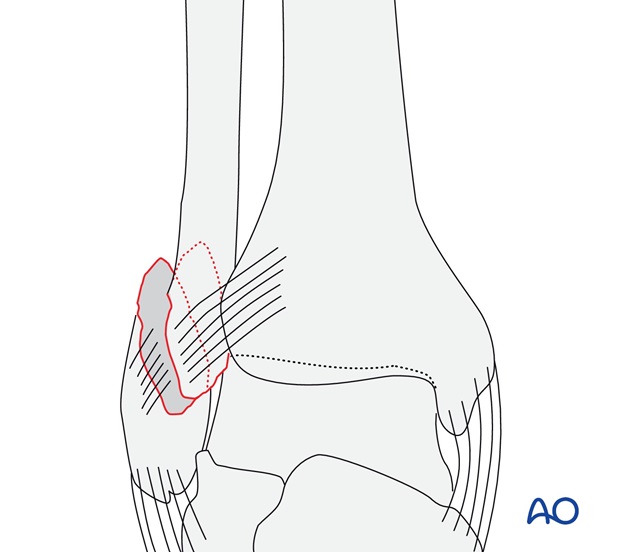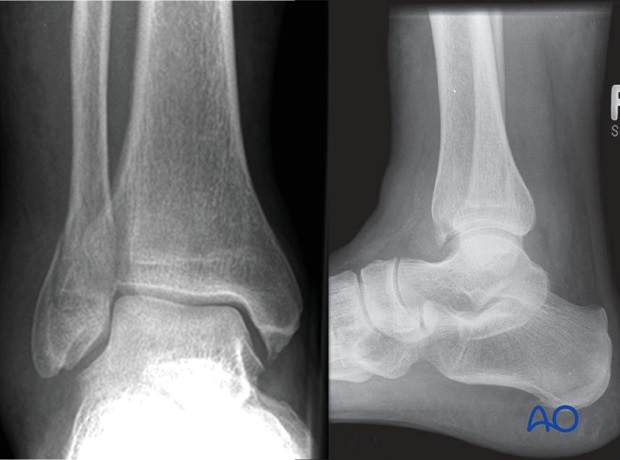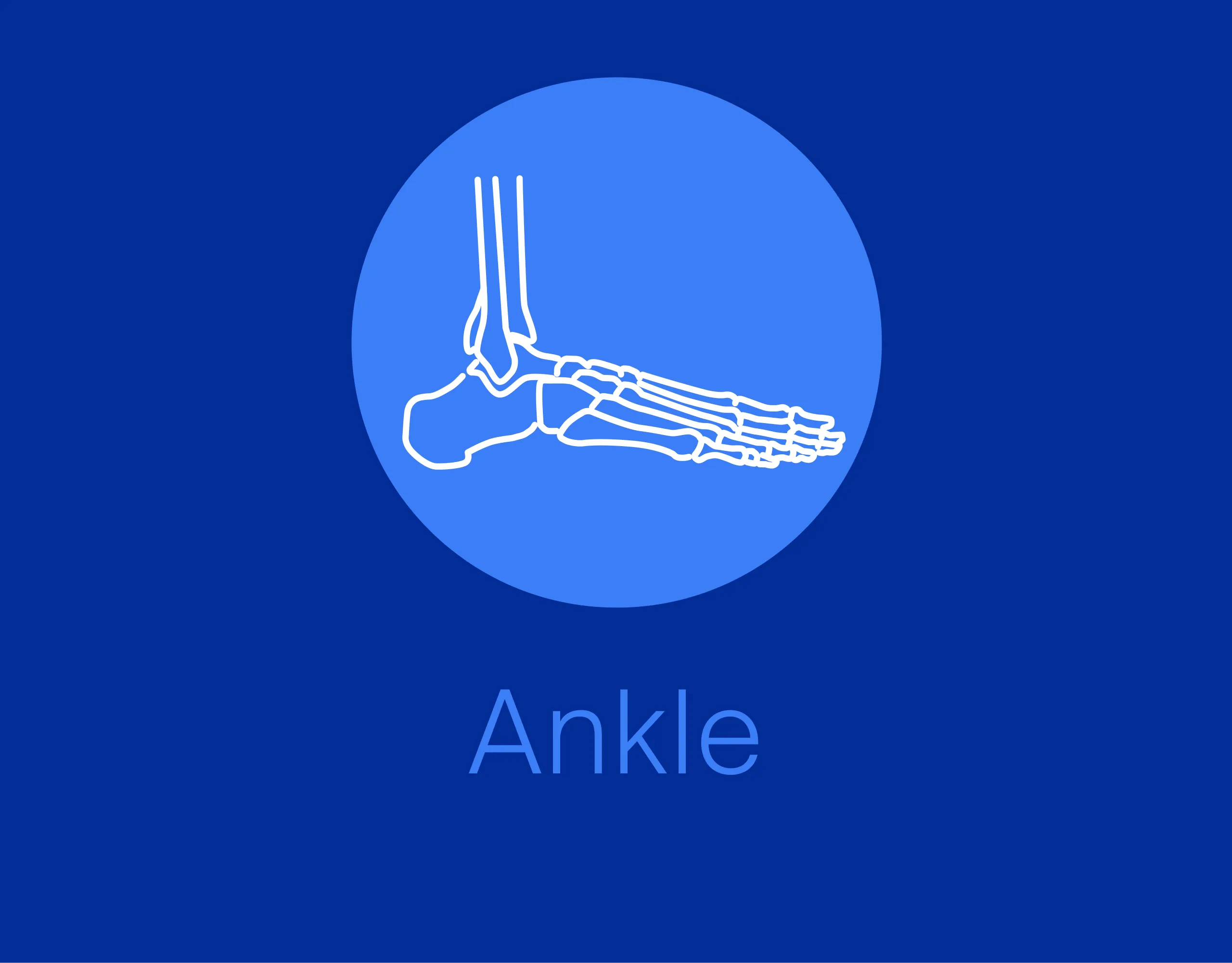Transsyndesmotic, lateral isolated simple fracture
Introduction
If there is a simple fracture at the level of the syndesmotic ligaments, either undisplaced, or minimally displaced it is classified as an AO/OTA 44B1.1 or B1.2 fracture.
The most common injury pattern occurs with axial loading of a maximally supinated (adducted) foot. Subtalar inversion results in external rotation of the talus in the mortise. This causes an oblique fracture of the fibula, starting at the level of the ankle joint and extending proximally from anterior to posterior. This may be a non-displaced crack fracture, if the deforming force ceases at this point. Progressive talar rotation causes posterior displacement of the lateral malleolus, opening the oblique fibular fracture. These fractures correspond to the supination-eversion fractures, stages I-II, in the Lauge-Hansen classification.
Simple
If there is a simple, oblique fracture at the level of the syndesmotic ligaments, either undisplaced, or minimally displaced but with an intact anterior syndesmosis it is classified as an AO/OTA 44B1.1 fracture.
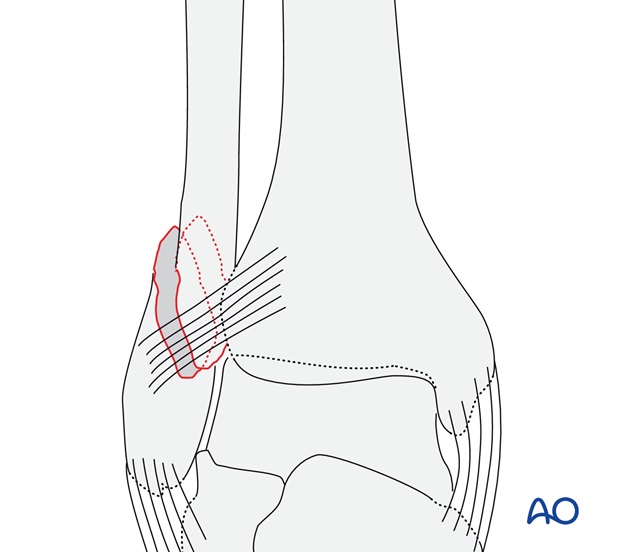
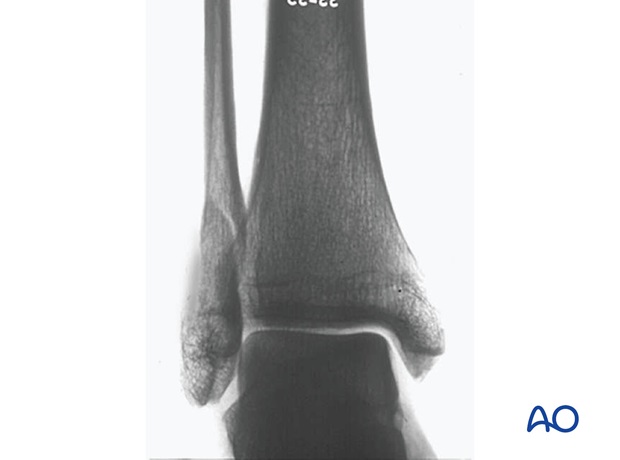
Simple, with rupture of the anterior syndesmosis
The stress begins at the anterior syndesmotic ligament and results in a ligamentous rupture, or in an avulsion fracture of the anterior syndesmotic ligament's fibular, or tibial, insertion (Lauge-Hansen, SE stage I). Further stress, due to external rotation of the talus, leads to the fibular fracture (Lauge-Hansen, SE stage II). The interosseous ligament is not ruptured.
This is classified as an AO/OTA 44B1.2 fracture.
